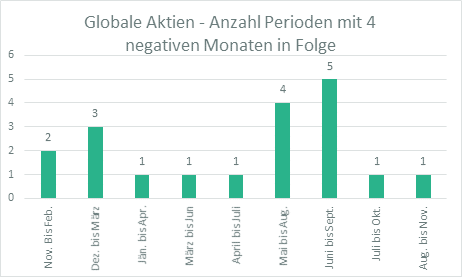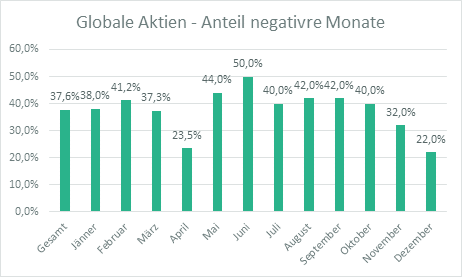It is impossible not to notice the rising interest in algorithm-based investing. Whether a robo-advisor or passive fund (in which the algorithm is the methodology of the underlying index), a growing number of people rely on such an emotion-free solution. That has of course one fundamental advantage: the price.
An algorithm will undoubtedly come cheaper than an active manager. It does, however, have also one fundamental disadvantage compared with a human. And that is what I would like to elaborate on, in a slightly roundabout way.
Let us begin with a simple task: A bat and ball cost a total of $110. The bat costs $100 more than the ball. How much does the ball cost?
If you didn’t think it through for too long, then perhaps you came up with the answer of $10, even though it is easy enough to check that the correct one is $5. If that is what happened, do not despair: 50 % of students at the prestigious Princeton University answered incorrectly too, so the problem is not one of intelligence. The mechanism that sometimes brings us to such ill-advised answers and actions is reminiscent of instinct or – in the negative terms – the compulsive subconscious of Sigmund Freud’s psychology. Nobel Laureate Daniel Kahneman uses for it a neutral term System 1 (see graph below).
This system allows us to manage simple tasks quickly, in a way that does not require much energy. But when it comes to more complicated tasks, its automatic and emotional nature might cause problems. There we must put forth reasoning, i.e. System 2. Although reasoning is slow and requires more effort (“thinking hurts”), it is of course able to deal with far more difficult tasks than the one with the bat and ball.
Systems 1 and 2

Source: Kahneman, Daniel. Maps of Bounded Rationality: A Perspective On Intuitive Judgement And Choice. Princeton University, 2002.
Investors take profits too soon and hold on to losses
Reasoning made it possible for Kahneman and his colleague Amos Tversky to formulate their theories, and – if we return to the realm of investment – elegantly explain why investors take profits too soon and, by contrast, hold on losses.
Kahneman and Tversky’s Prospect Theory (see graph below) shows how asymmetrically people ascribe subjective value to profits (first quadrant) and losses (third). At first glance it is evident that the line is not linear. Whereas is a concave function for profits, meaning arched inwards, for losses it is convex, or arched outwards. In other words, we are far more worried about losses than attracted by profit of the same size.
Investors want to avoid negative outcome instead of “taking” reasonable risks
If, for example, we are faced with the decision of flipping a coin and winning either $100 or nothing or getting $40 without any contest, a significant number of people will choose the second option – the certain win. Although the first option has logically higher expected value (100 × 0.5 + 0 × 0.5 > 40), majority of people fear bad luck with the coin because, in their mind, they compare it with the certain win.
Given that the prospect of loss has a far greater psychological charge (around 1.5 – 2.5 times), we paradoxically risk-seeking to avoid even the slightest negative outcome instead of taking a reasonable risk in situations which could lead to a significant profit. In a losing streak, we bet again to avoid any red ink in our “mental accounting”. But if we are wining, the joy of further profits is diminishing, and we tend to play “safe”.
Changes in Perceived Value as Explained by Prospect Theory
Reasoning (System 2) is able to analyse all this and much more and, with the correctly chosen approach (classic deliberations such as: Am I not investing under time-stress? Am I not dealing with multiple cognitive tasks at once? Do I place conscious emphasis on statistical laws?) adjust accordingly.
Indeed, reasoning is truly very powerful, and we have to let it work at the expense of System 1 most of the time in order to invest successfully. And it is precisely when realizing this that the algorithm-based solutions mentioned above come into play.
Out of fear of the unpredictability of their emotions, aware of the insufficient level of their knowledge, or simply out fatigue or exhaustion, people now more frequently are inclined to leave their reasoning to an algorithmic system that evidently suffers from none of these ailments. And it must be said that they have a surprising ally in this in Daniel Kahneman himself.
The efficient market hypothesis
Although spending a considerable part of his academic career analysing cognitive errors to help people avoid them, when asked about investing Kahneman paradoxically said that the stock market is too complex for intuition regarding future prices to develop.
According to him, a large number of random movements do not allow people to build relevant associations. By that, he basically supported proponents of the efficient market hypothesis who contend that all information is already contained in the stock prices, and that there is therefore no way of beating the market average with your own judgment.
If this is indeed the case, stocks are priced at all times, you cannot find anything undervalued or overvalued, and engaging in active investment is pointless, meaning that we can simply become more passive or leave it to algorithms altogether (they won’t at least regret that they cannot outperform either).
Disagreeing with Kahneman’s conclusions
On the other side, several active investors (for example, Graham, Buffett, Soros, Druckenmiller, Tillinghast, etc.) who were able to beat the market average over the long term would certainly disagree with Kahneman’s conclusions. Given that I myself am professionally involved in picking stocks, I have been asking myself for some time what is Kahneman overlooking?
What is missing from his theory? Then I realised that there are essentially three model situations which active investors profit from, and that have something in common. A general sell-off, stocks below intrinsic value, and companies with competitive advantage. And the commonality? All involve a high number of mutually unknown people, i.e. collectivity.
It is clear in the case of general sell-off: orders of thousands of anonymous participants outweigh for some time the other side, and the task of an active investor is “merely” to allocate a disproportionately large amount of capital. In the case of stocks below intrinsic value, it is about discerning negligence or exaggerated reactions of others at intensive random moments (geopolitical threats, arbitrations, corporate scandals, and the like). And competitive advantage is again a phenomenon associated with the insight of many distinct people (managers, employees, customers, regulators) regarding future functioning of a firm. Collectivity is therefore the common denominator of the three situations, and as such it steps beyond Kahneman’s framework of System 1 and 2.
Collective unconscious as a tool of higher intelligence
Subconscious and reasoning are, after all, strictly individual phenomena. They are suitable for empirical research that Kahneman and for that matter most scientists conduct, but fail to explain broader societal movements, such as election results, wars, revolutions, or less dramatic changes, such as consumer preferences or share prices.
In the diagram, Kahneman lacks a collective area that would connect people across regions, cultures, social strata, and perhaps even time. Access to such collective wisdom would – as hinted by the three model situations – be essential in the financial markets, and elsewhere, and for this reason I would like to point to the work of Carl Gustav Jung, who introduced psychology to the concept of the collective unconscious. It is an area of psyche that lies totally outside the sphere of consciousness.
In contrast to Freud’s subconscious, which encompasses only subliminal or repressed contents, with the unconscious one could not have had any personal experience. The unconscious is a sort of collection of all human experiences and traits (which somehow reminds me of the stock exchange, because it also exists to bring together and materialise human experience and wishes). We get informed about it only indirectly (via dreams, visions, folklore, or what are known as synchronicities, meaning the value interconnection of causally unconnected events) because it is not accessible to thought. That is why unconscious is largely ignored by research or practitioners.
Mathematical propositions (in a fairy-tale, one can be more than three), the laws of space or gravity (most of us flew in a dream), the sequence of time (a vision that subjectively lasts an hour usually comes in a few seconds), and even causality (has emperor clothes or not?) do not function therein. Unconscious is therefore a sort of System 3 which supplements the limited capacity of the subconscious and reasoning in arranging collective matters (just as the stock exchange or free market in general supplements our ability to consciously plan and manage). In short, unconscious is a tool of higher intelligence.
The Unconscious as System 3

Source: Author
Algorithms have a fundamental disadvantage compared to human judgment
It’s clear now why algorithms have a fundamental disadvantage when compared to human judgment. In spite of their phenomenal advancement, they do not have access to the unconscious. They are able to analyse a huge volume of data, but they cannot understand dreams, visions, or apparently random, unique events that only take on meaning after we subjectively ascribe them value.
Algorithms do not have access to intrinsic processes that day after day shape our convictions. But it is precisely in these phenomena and in the continual clash of their contents (internal vs external, individual vs collective, feminine vs masculine, good vs bad) where value evidently lies – of a good stock investor, and perhaps of human life.
I would recommend Jung’s book “Man and his symbols” to readers who would like to look more into the study of the unconscious. The book is an outstanding, but comprehensible introduction to the topic.
Legal note:
Prognoses are no reliable indicator for future performance.
Legal disclaimer
This document is an advertisement. Unless indicated otherwise, source: Erste Asset Management GmbH. The language of communication of the sales offices is German and the languages of communication of the Management Company also include English.
The prospectus for UCITS funds (including any amendments) is prepared and published in accordance with the provisions of the InvFG 2011 as amended. Information for Investors pursuant to § 21 AIFMG is prepared for the alternative investment funds (AIF) administered by Erste Asset Management GmbH pursuant to the provisions of the AIFMG in conjunction with the InvFG 2011.
The currently valid versions of the prospectus, the Information for Investors pursuant to § 21 AIFMG, and the key information document can be found on the website www.erste-am.com under “Mandatory publications” and can be obtained free of charge by interested investors at the offices of the Management Company and at the offices of the depositary bank. The exact date of the most recent publication of the prospectus, the languages in which the fund prospectus or the Information for Investors pursuant to Art 21 AIFMG and the key information document are available, and any other locations where the documents can be obtained are indicated on the website www.erste-am.com. A summary of the investor rights is available in German and English on the website www.erste-am.com/investor-rights and can also be obtained from the Management Company.
The Management Company can decide to suspend the provisions it has taken for the sale of unit certificates in other countries in accordance with the regulatory requirements.
Note: You are about to purchase a product that may be difficult to understand. We recommend that you read the indicated fund documents before making an investment decision. In addition to the locations listed above, you can obtain these documents free of charge at the offices of the referring Sparkassen bank and the offices of Erste Bank der oesterreichischen Sparkassen AG. You can also access these documents electronically at www.erste-am.com.
Our analyses and conclusions are general in nature and do not take into account the individual characteristics of our investors in terms of earnings, taxation, experience and knowledge, investment objective, financial position, capacity for loss, and risk tolerance. Past performance is not a reliable indicator of the future performance of a fund.
Please note: Investments in securities entail risks in addition to the opportunities presented here. The value of units and their earnings can rise and fall. Changes in exchange rates can also have a positive or negative effect on the value of an investment. For this reason, you may receive less than your originally invested amount when you redeem your units. Persons who are interested in purchasing units in investment funds are advised to read the current fund prospectus(es) and the Information for Investors pursuant to § 21 AIFMG, especially the risk notices they contain, before making an investment decision. If the fund currency is different than the investor’s home currency, changes in the relevant exchange rate can positively or negatively influence the value of the investment and the amount of the costs associated with the fund in the home currency.
We are not permitted to directly or indirectly offer, sell, transfer, or deliver this financial product to natural or legal persons whose place of residence or domicile is located in a country where this is legally prohibited. In this case, we may not provide any product information, either.
Please consult the corresponding information in the fund prospectus and the Information for Investors pursuant to § 21 AIFMG for restrictions on the sale of the fund to American or Russian citizens.
It is expressly noted that this communication does not provide any investment recommendations, but only expresses our current market assessment. Thus, this communication is not a substitute for investment advice.
This document does not represent a sales activity of the Management Company and therefore may not be construed as an offer for the purchase or sale of financial or investment instruments.
Erste Asset Management GmbH is affiliated with the Erste Bank and austrian Sparkassen banks.
Please also read the “Information about us and our securities services” published by your bank.


